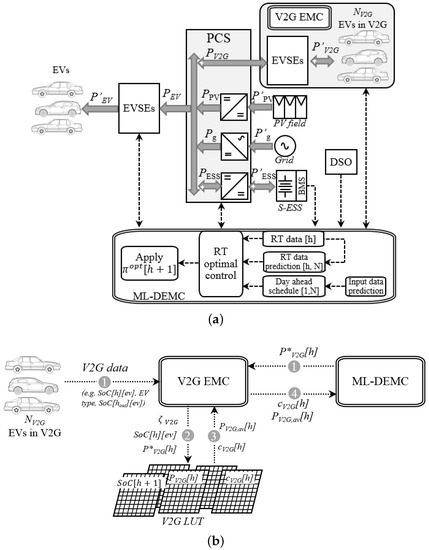Table of Content
Your battery needs to be recharged, ideally when your car is not in use. Essentially, it is a way to plug your car’s battery into an outlet that charges it. Because charging stations are not necessarily common in public spaces, most owners of electric vehicles install a charging station at home. In fact, according to the Natural Resources Defense Council , over 80 % of EV charging happens at home.

Altogether, these components safely allow for power to flow from your wall through your charger to your EV. Electricity rates vary by state and even city; check with your provider to learn more about yours. Most utility companies charge higher rates during peak hours. For example, on-peak hours for electricity are between 8 am and 10 pm. Off-peak is the opposite of those times and weekends and holidays are different. You can see more information on Minnesota state’s peak hours and cost per kWh here.
Additional Considerations and Costs
Tesla went full Apple and has stopped delivering vehicles with included charging hardware which is now sold separately. The company had previously included Level 1 chargers with their vehicles for free, and using them to charge your Tesla required just a standard 120V outlet. While 240v NEMA 6-50 outlets are common in newer homes, your home may not have one. If that’s the case, or you want to upgrade your electrical panel to accommodate more volts used at once time, you will want to hire a certified electrician. The cost for an electrician can vary based on your specific needs, but having a certified installer will ensure safe installation and peace of mind. Even if extensive renovations aren’t required, you’ll still need to pay a professional to install the equipment.

In fact, switching to solar is fantastic for reducing your overall electricity bill, and it's one of the best long-term solutions to lower your Tesla charging costs — up to 65%. With that said, some areas and homes simply aren't suitable for solar power, so it's best to consult a professional. The charging station with the J1772 connector is believed to be more expensive due to licensing fees for that type of connector. I have the wall connector installed in the garage for my Model 3. It will make it easier to transition to my next car if that car is not a Tesla but can use the same connector. This installation required a Wi-Fi repeater for full charger functionality and was complicated because the charging circuits go through a neighbor’s property.
The connectivity of your home EV charger
Electrical panel replacement costs $1,800 to $2,500 for a 200-amp panel. See the table below for the average installation costs of a new electrical panel. This cost is highly dependent on your home’s additional electrical capacity and where your garage is located relative to the electrical panel. In some instances, additional materials or components like conduit or a larger electrical panel, may be required. Most of these materials may be purchased at your local hardware store or by the electrician . Then, the cost savings will be even more and you’ll be so glad you went with an electric vehicle.
It’s also good to check whether there are any government incentives that you can leverage to reduce the total cost. As a rule, the higher the power, the more energy a home EV charger will be able to deliver to your car, and the faster its battery will be charged. This article explores the average costs of an EV home charger by breaking down and examining the factors that impact the total price. Some homes have 240-volt circuits already, and all that’s needed is the outlet. If you have to run a 50 amp line and mount the outlet, it gets pricier. Charging cables are available at a range of lengths from 2 to 25 feet.
Home Charging Stations: Everything You Need to Know About EV Charging Stations in 2023
Many electricians will not tough these panels and instead recommend to replace the thing entirely with a new, code-compliant panel. Whether or not you have a home with access to an electric outlet, garage outlets typically allow for easier installation. Service availability, features and functionality vary by vehicle, device and the plan you are enrolled in.
For an average, 240-volt system, new circuits cost between $300 and $800 with a 50-amp outlet. Conduits, which protect electrical wiring, cost between $3 and $5 per square foot. Expect to pay $300 and $1,200 for the EV Level 2 charging station itself. There will be additional costs for labor and other materials. An EV, or electric vehicle, is a vehicle that runs on electricity instead of gasoline. There are many EV stations located around the country, and they are becoming more and more common.
There are many places you can charge your EV while on the road. According to EV Charging, there were 17,500 charging stations in 2019. That is 1 in 74 public charging stations to 1 in 1600 gas stations. Whether you’re a homeowner with an electric car or a business owner that has a parking lot, you may be considering whether or not it’s worth it to have an EV charging station installed. Even if you’re not ready to head into the future of electric driving, that future is coming and will be part of your world.

Most people pay around $1,200 for a 240-volt outlet, Level 2 charger, and wall-mounted system. The low cost for this project is $300 for a replacement Level 1 charger used in an existing 120-volt outlet. The project’s high cost is $4,500 for a Level 2 charger designed for two cars with a 240-volt outlet, pedestal mount, and a circuit panel upgrade. These types of power supplies are typically found in commercial buildings with three-phase power supplies.
Around $600 of the cost of installation on a home EV charging station comes from labor costs—about half the total price. That said, if you aren’t qualified, please do not try to do this yourself just to save some money. You may also need to pay for trenching to be dug and power lines to be laid to a new outlet. All of that can get pretty expensive—Templeton quotes around $5,000. Check that your vehicle charging station has a UL certification, which confirms it has been safety tested. Also, remember to keep kids and pets away from outlets and connectors.
The downside of a level 1 charger is that they only add roughly 3 miles of range per hour of charging on average. If you’re in a rush and need a fast charge, a level 1 charger might not always be suitable. There is also an option that is slightly less expensive than the $600 wi-fi models – that is a portable Level 2 charger.
However, there are a variety of options to suit your lifestyle and driving needs. Following the opening of the connector, Tesla has been making some moves to push its charging station – also known as Tesla Wall Connector. This was a relatively easy installation, and it took about four hours to complete the work. This installation had no hiccups or challenges, and it took about three hours to complete the job. All it needs to run is a 240v NEMA 6-50 outlet commonly found in your home’s garage.
Unless you are a licensed electrician with experience installing high-amperage circuits, this is a job better left to the professionals. Typically, an inspection occurs upon completion of the work. The service required an upgrade or energy management device, and the work took about four hours.

No comments:
Post a Comment